I’ve been at a residency in the grassy hills of northeastern Wyoming for the past few weeks. I realized the other day that I had passed quite close to Natural Trap Cave, a massive and ancient limestone sinkhole that has preserved the bones of tens of thousands of years worth of mammal species, many of which are now extinct. The cave was recently reopened for digging after a fifteen year closure, and paleontologists from Wyoming and afar are currently rappelling down into the cave to sift through the mass of ancient bones. One of the species that they’re looking for is the American Cheetah- Miracinonyx (which means false cheetah, to distinguish them from the still extant cheetahs of Africa).
In the hills around the residency there are a lot of Pronghorn- a variety of stocky, not-particularly-graceful but handsome antelope that are noted for their unholy speed. They are some of the fastest living things, and nothing alive on the North American continent has a chance of catching them when they get up to a gallop. Why would they have evolved such an ability? It’s been suggested (although evidence is lacking) it was because they needed to get away from Miracinonyx. It’s a convenient cause-and-effect scenario, but the diverse lifestyles of contemporary cheetahs (the African and lesser-known Iranian varieties) as well as the fleet-footedness of all pronghorn ancestors suggest that there isn’t so precise a connection. It’s nice to imagine, though.
I’ve been trying to work on my color-block technique while I’ve been here, and the grasses by the creek and the pronghorn in the hills suggested a cheetah print.
First, drawing the animal onto a shina plywood block. I cut out the outline of the cat and grass, and then printed that outline onto a sheet of paper, taped down next to the block. Then I switched out the blocks and printed the ink from the paper onto a new fresh block. Then I cut out the shape of the cat and the grass to make a blue block for the sky.
Printing the first block, the blue.
Next I returned to the first block, and printed that in yellow. Got some nice transference on the baren as I inked up the block
Two colors down- now for the reduction of the second block. Reduction just means that you are carving away a bit from the block after each printing to make the surface ready for another color, shading down from yellow through two oranges to brown. This means that you better make the prints count because you’re never going to be able to print that layer again.
Third layer- first orange.
Lastly- the final brown layer. I got about thirty of these made, and then I cleaned up and went for a walk in the hills, where I took the picture below.

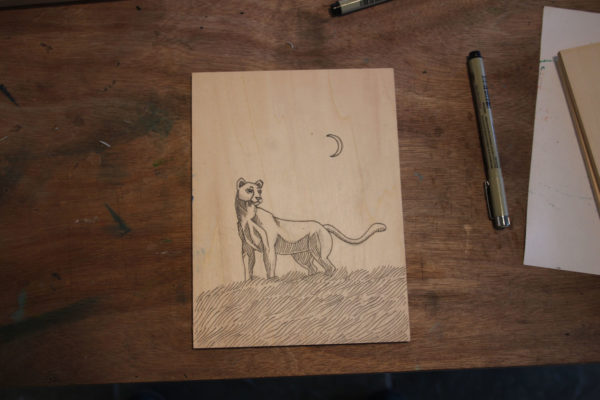
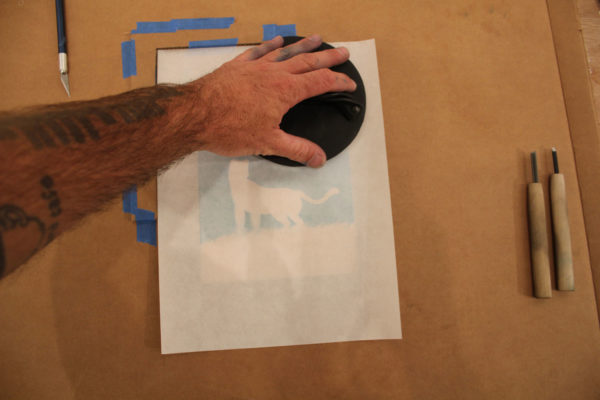
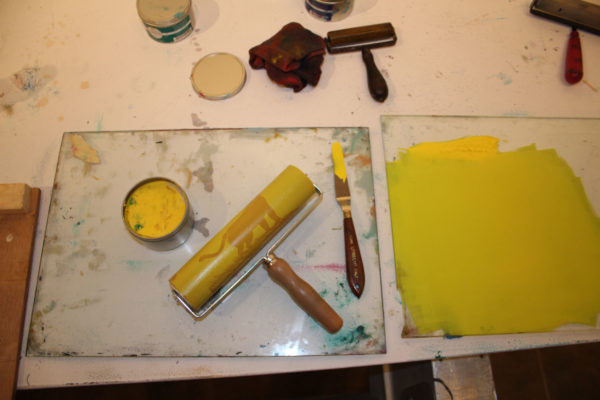
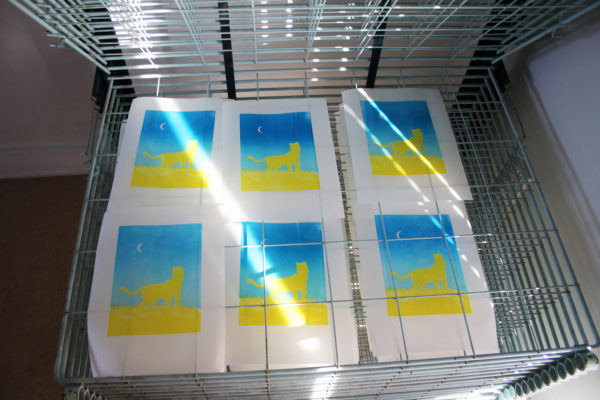



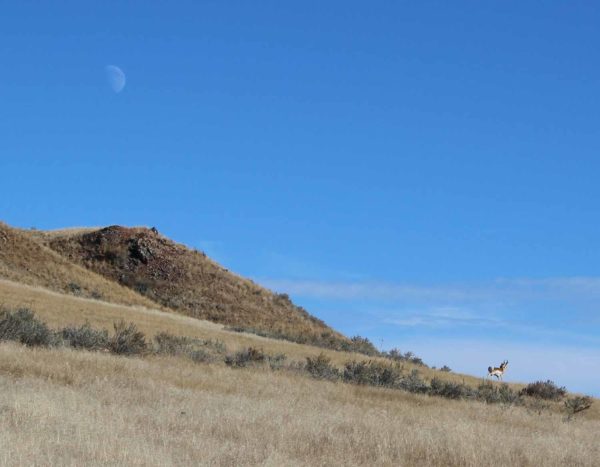
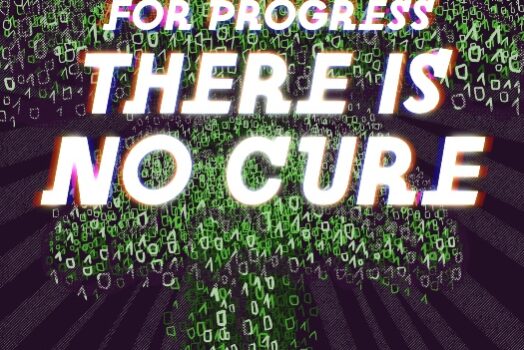

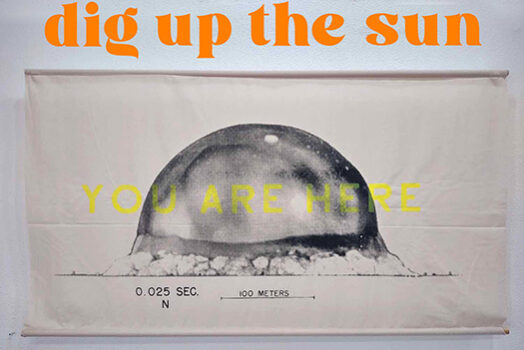
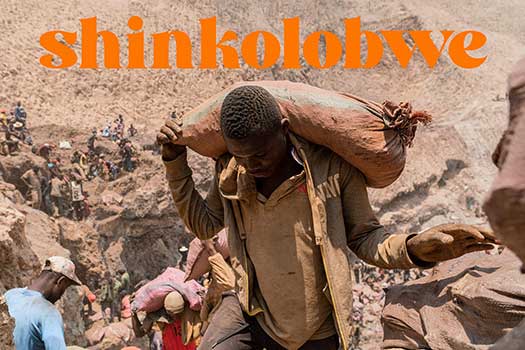
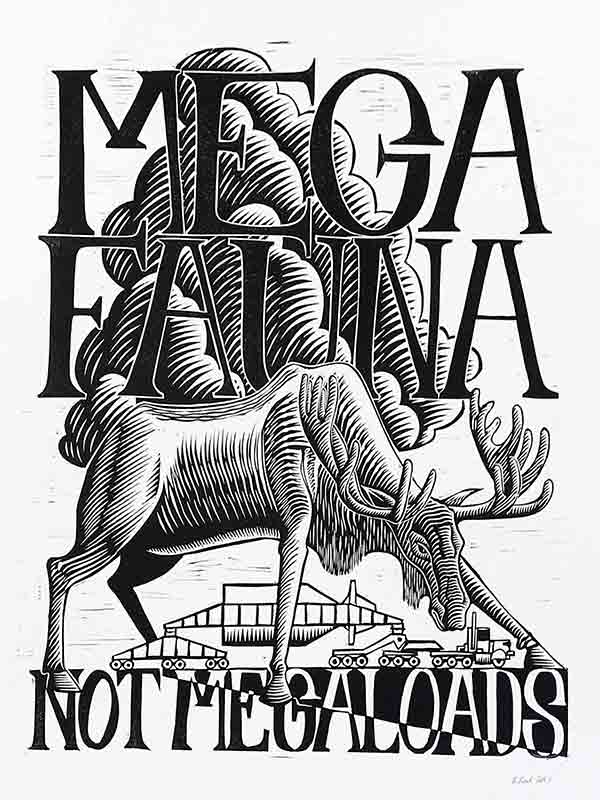
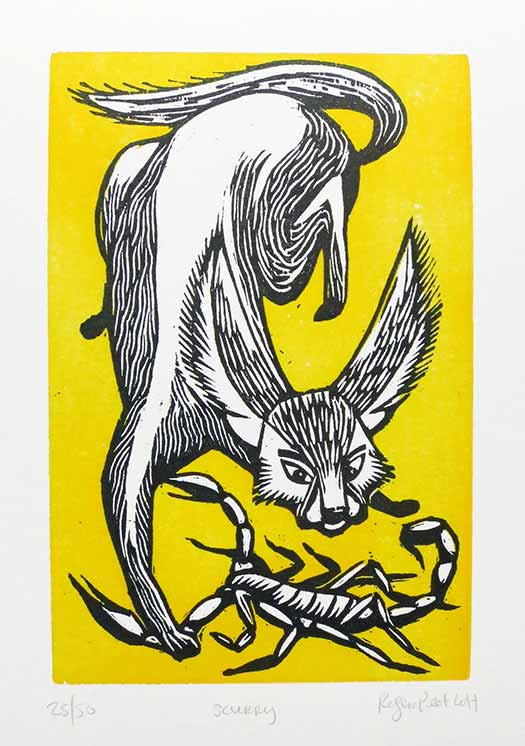
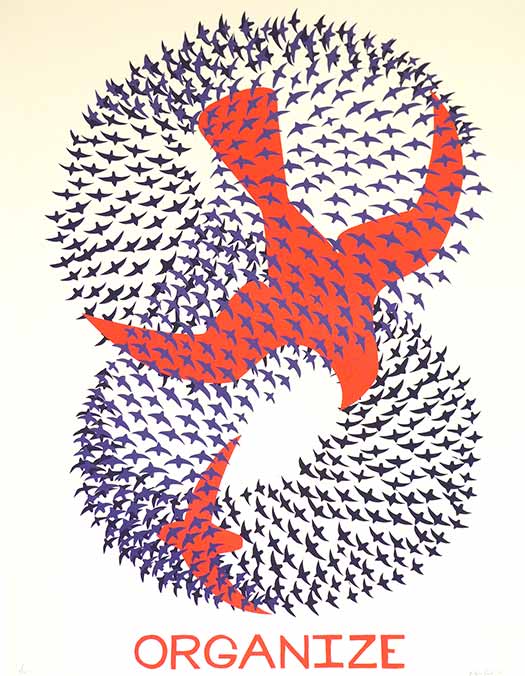
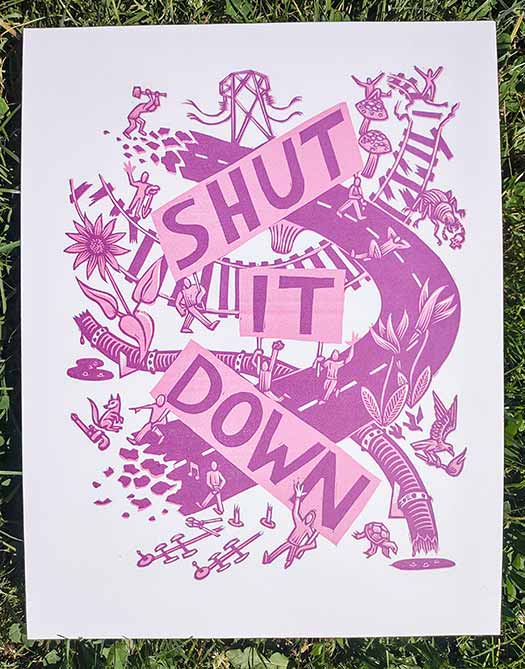
This is really beautiful Roger. It reminds me of some of the Deco-inspired print work from the 30s/40s, like a little Rockwell Kent-ish. Really great!
Thanks! Challenging myself to make things with no black in them.